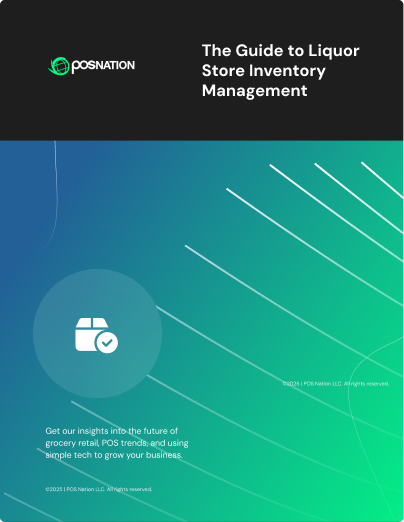You may think you have a good grip on your inventory management processes, but every November, retailers across industries are put to the test.
There’s supplier pressure, fading memories of last year’s sales figures, and a time crunch. For some stores, this results in a cash flow disaster from overstocked seasonal items. Others understock and are left with empty shelves by lunchtime on Black Friday, when customers are ready to buy.
Luckily, Black Friday inventory management doesn't have to be a guessing game. Smart retailers use data and strategy to plan their inventory orders and protect their cash flow. But what strategies do successful stores use each November?
This post covers five key tips for stocking smart this Black Friday.
Understanding the Black Friday Inventory Management Basics
Before we dig into our list of tips for smarter Black Friday inventory management and ordering, let’s cover the basics of Black Friday ordering and preparation.
Strategic inventory management for peak shopping periods like Black Friday comes down to one thing: making purchasing decisions based on real sales data, not guesswork.
Many retail store owners fall into the trap of emotional buying when prepping for Black Friday. They might use automated reorder points and track sales the rest of the year, but come November, they end up stocking products because they “feel like” they’ll sell, or because a supplier offered a deal they couldn’t refuse.
If you want to stock your shelves successfully this holiday season, you need to treat inventory management like a science. In this post, we’ll show you exactly how to use your existing sales data to make the most intelligent stocking decisions possible this Black Friday (and beyond).
Related Read: 6 Proven Holiday Promotion Ideas for Small Businesses
With this foundation in place, let's dive into the strategies that’ll help you optimize your Black Friday inventory and maximize your profits.
1. Leverage Historical Sales Data
Tapping into your historical sales data is the key to preparing for Black Friday success — which means you need to take advantage of your point of sale (POS) system.
Check out last year’s sales reports, but don’t just look at your total sales numbers. You need to dig deeper to get the most valuable data.
What’s the gap between what you thought would sell and what actually sold? Check average order values and customer purchase patterns, and look for which products drive your highest transaction value. This information will inform your inventory plan for the next peak season.
Before placing those inventory orders, be sure to adjust your expectations to account for business growth and market changes. That doesn’t mean that if your store has grown 20% since last year, you should order 20% more of everything, though. Some products scale with your store, and others plateau. Be sure to account for all of this data when making your inventory decisions.
2. Track Inventory Velocity
Inventory velocity refers to how quickly products move off shelves. To keep your shelves stocked, you need to track these rates so you know which products need more safety stock and which are slower-moving items where you can stock fewer backups.
An advanced POS system tracks your inventory turn rates automatically, showing the items that consistently turn over quickly versus those that tend to sit stagnant. The fast movers from previous holiday seasons are likely to perform well again, but keep an eye on whether any of those popular items seem to be losing momentum. Watching sales velocity can indicate when a trend is running its course, helping you avoid overstocking.
Related Read: Inventory Flow 101: The What, Why, and How
The key to this tip is balancing high-velocity items with profit margin considerations. A grocery store might find that holiday baking staples fly off the shelves but generate narrow margins, while specialty ingredients move more slowly but are more profitable. The smart bet, here, would be to stock deep into those baking staples and keep steady levels of your high-margin specialty items.
3. Set Up Real-Time Inventory Monitoring
Overselling during Black Friday can be a customer relationship killer. If your online store shows an item as available but your physical location is sold out, you’ll leave customers angry and frustrated.
The solution is to implement real-time inventory monitoring through your POS system. The right system updates your online inventory automatically any time someone buys an item in store (and vice versa). That way, you don’t have to worry about accidentally selling “ghost” products you don’t actually have.
Here are some POS features to look for in your Black Friday inventory management suite:
- Real-time stock synchronization across all sales channels
- Automated low-stock alerts with customizable threshold levels
- Promotional inventory allocation to separate Black Friday stock from regular inventory
- Multilocation inventory tracking for businesses with multiple stores
- Barcode scanning integration for instant stock updates during receiving
Investing in the right POS system and inventory tracking processes helps prevent you from promising customers products you can't deliver, keeping customers happy and willing to spend more in your store.
4. Create Industry-Specific Stocking Strategies
Different retail verticals need to take different approaches to Black Friday inventory management. Your POS data shows you exactly which products your customers buy during holidays, but the strategy varies dramatically by industry.
Let’s take a look at a few examples.
Grocery stores generally need to stock up on holiday baking supplies and seasonal ingredients. Use your POS data to see which specialty items see massive demand spikes during Black Friday week and plan accordingly.
Track sales velocity on seasonal baking ingredients, holiday meal components, and party supplies, and invest in a point of sale solution with features like bundle pricing to make holiday baking kits, automated inventory and reorder alerts for fast-moving staples, and cross-merchandising options.
Liquor stores can usually succeed in selling gift sets, premium bottles, and party supplies for big holiday gatherings. Chances are, you’ll need to appeal to both gift-buyers and party-throwers, and your sales data will show you whether to stock more gift sets or party staples for your audience.
Analyze gift set performance versus individual bottle sales to identify which products to stock and which gathered dust. You want a POS solution that can create gift bundles based on liquor merchandising, offer gift cards, and track customer purchase history so you and your staff can suggest premium upgrades.
Tobacco shops should prepare to sell premium cigars, gift humidors, and holiday vape kits. Customers will buy presents for enthusiasts and might not be smokers themselves, so be sure to arm your staff with all the product information they need to successfully sell to nonexperts.
Your POS solution helps by providing staff with these essential details, tracking customer preferences, allowing you to create bundles and mix packs, and, of course, including automated age verification with ID scanners to ensure no illegal sales slip through during the rush.
The key across all industries is to understand your specific customer behavior during holiday periods. Your POS data shows you which product categories drive the most revenue during Black Friday, giving you the data you need to make the right ordering decisions.
5. Establish Strong Supplier Relationships
Ordering timelines can get tight around Black Friday, especially if you need to restock. At times like these, strong supplier relationships are your lifeline.
Suppliers often require larger minimum orders during these peak seasons, everyone is fighting over the same delivery trucks to get their orders out, and a delayed shipment can mean thousands of dollars in lost revenue. This means you need to invest in your vendor relationships early and often.
Start by learning their holiday ordering requirements and negotiating in your store’s favor, if possible. Begin this process early. If you don’t realize until October that your key supplier needs a $5,000 minimum order, and you only planned to spend $2,000, you’ll give yourself unnecessary headaches.
Pro tip: If it’s too late, ask if you can combine your order with other local retailers. This approach can help everyone reach the minimum threshold without breaking anyone’s budget.
You should also build out contingency plans in case of supply chain disruptions. Surprise supply chain issues pop up every holiday season. Here are a few tips to plan ahead and avoid trouble:
- Identify alternative suppliers for your most critical products.
- Maintain relationships with both local and national vendors, as locals offer faster delivery times during peak periods, but nationals provide better bulk pricing.
- Use your POS system to track all supplier relationships, making it easy to pivot when Plan A falls through.
Taking the time to establish strong relationships with your suppliers and balancing your ordering across multiple vendors gives you the flexibility to keep customers happy and shelves stocked — even when the unexpected happens.
Smart Black Friday Inventory Management Starts With the Right Tools
Stop treating your Black Friday inventory management processes like a stressful guessing game. Using the five strategies in this post, you can start using your POS data to track what actually sells — this way, you can make decisions based on customer behavior, not gut feelings.
But remember: Smart inventory management isn’t just for Black Friday. The systems and processes you put in place for your peak season rush can improve your store operations and profitability year-round. And the best way to put these systems and processes in place is with the right tool.
Whether you run a grocery store, liquor store, convenience store, tobacco shop, or general retail location, the right POS technology makes all the difference. Investing in a tailored solution designed for stores like yours ensures you always have the features and reports you need to make the best decisions and run your business efficiently.
Ready to transform your Black Friday inventory management? Schedule a demo today to discover how our tailored POS solutions can take the stress out of your holiday sales season.








 by Graham Hoffman
by Graham Hoffman


 by Gina Obert
by Gina Obert